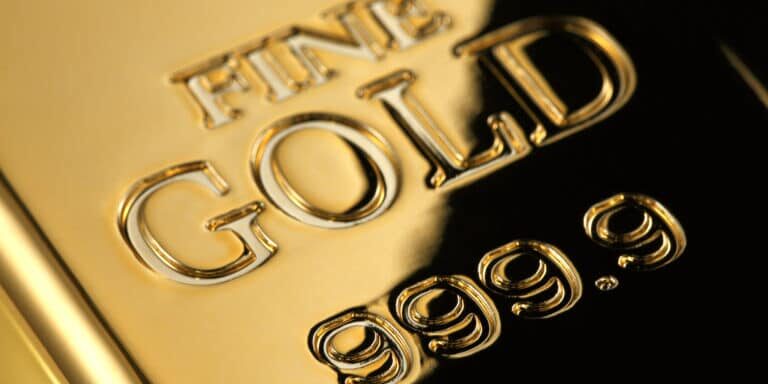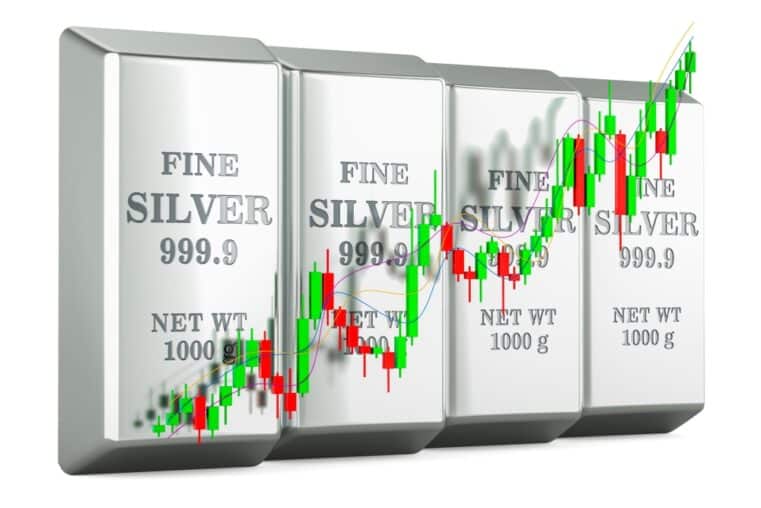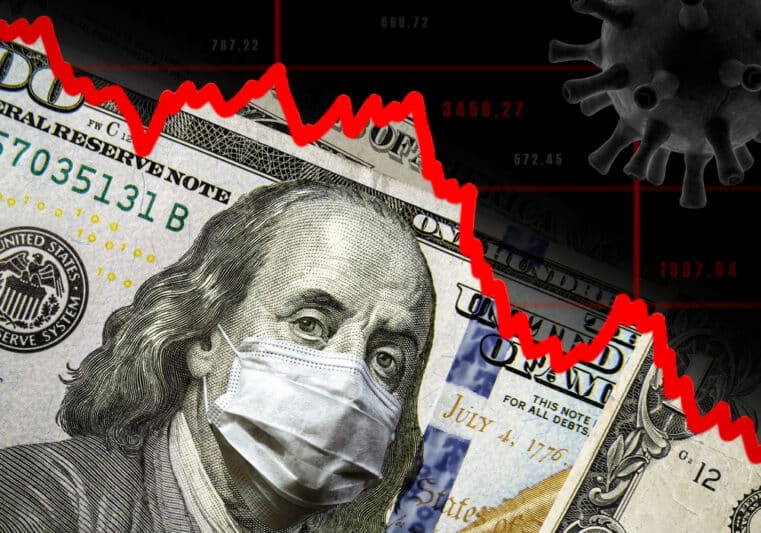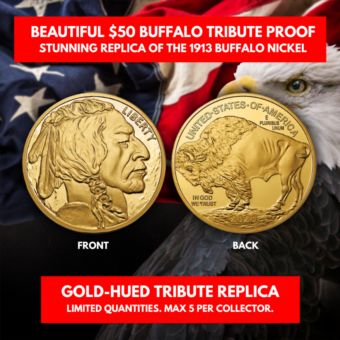
999 vs 9999 Gold: What Is Fine Gold?
The fineness of a precious metal object (gold coin, gold bar, gold rounds, etc.), represents the weight of the fine metal in it. It also includes the base metals and other elements within that object. In jewelry ‘base metals’ are added to increase both hardness and durability to the gold product. When talking about 24 karat gold what is the difference between 9999 and 999 fine gold?
How Is It Measured
There are two common ways of measuring the fineness of gold, the millesimal fineness scale, and the 24 karat gold measure. The karat measure is only for gold (diamonds rely on carats with a “c”). Here we will discuss what pure gold is and when 9999 vs 999 makes sense from a buyer’s perspective.
Millesimal fineness is a system of denoting the purity of platinum, gold, and silver alloys by parts per thousand of pure metal by mass in the alloy. The karat is a fractional measure of purity for gold alloys, in parts fine per 24 parts.
Fine Gold Is All About Refining
Gold bullion purity is determined post-refining and due to varying technologies and standards around the world. Not everyone does it the same way. For instance, the minimum accepted fineness of gold around the world is 99.5%. 0.15 oz of gold per kilogram purchased is just US 1,200 dollars per oz. It comes to the US 180 dollars per kg bar. Despite most European and American clients expecting 99.99%+ purity, this is mostly a fact of the declining cost of refining over time. That is to say, the difference between refining to 99.5% and 99.99% for most primary refiners is negligible compared to market preferences for a purer product.
The challenge is getting to 999.99%+ purity and above. This “five nine” metric is still widely used on collectible products that sell for a significant premium to their intrinsic commodity value. While there are a few products still traded at purities lower than “995,” these are generally limited to 98.6% Austrian Ducats and 91.7% British Sovereigns, Kruggerands, and US Eagles.

999 gold is considered the best purity of gold readily available and is described as being 24 karats.
Refining 999 vs 9999 Gold
According to the Royal Canadian Mint, they employ a two-stage process. First, the Miller chlorination process, an industrial-scale chemical procedure is used to refine gold to a high degree of .995 pure gold. Once you get to that standard the Mint employs the Wohlwill electrolytic process. This process refines gold to 99.99%+ purity and can go to 99.999% and 99.9999%+ bullion and collectible coins. So where does the process begin?
Refining starts with the reception of dore received from mines. Also, primary refiners like the mint receive scraps such as jewelry and coins for recycling. The next steps are taking the semi-refined product containing at least half base metal and using that to produce fine metal.
There are only two truly accurate ways that businesses can verify the fineness of the gold content they purchase. The first is to melt it down and assay the metal. This is a somewhat costly process yielding a highly accurate result. The “fire assay” as it is known in the industry is considered the most reliable method for accurately determining the content of gold in a “lot.” It also works for silver and platinum-group metals (PGMs).
The second is to use X-ray fluorescence (XRF) devices that can also be used on the unmelted product. In this case, it only measures the outermost portion of the metal but it does so relatively precisely. This machine has become a key component of most gold processing facilities (gold recyclers, refiners, or mining operations). The beauty of the XRF machine is that the concentration of gold can be determined somewhat near to a fire assay. Yet, it only takes a fraction of the time (seconds not hours).
Refining to 995 Gold
1. Place the product into a crucible and melt it at a high temperature in a furnace while injecting chlorine gas into the molten metal.
2. Remove the resulting by-product of chlorine and base metals (as well as silver) that forms at the top of the molten metal to get the 995 gold. Make sure to hang onto this “slag” and stockpile it to refine any trace amounts of gold at a future point.
3. Cast the molten gold into anodes if you want to continue refining it and otherwise into a saleable form.
Refining to 999+ Gold
1. Take the cast gold anode and place it into the appropriate acid-based electrolyte. Then set up a titanium cathode to attract the gold.
2. Apply electric current to the anode dissolving the gold and other trace metals into the electrolyte and attracting the gold to the charged cathode.
3. Collect the gold that has formed around the cathode to cast into bullion products and keep any trace elements that have settled for future gold recovery.
99.99 vs 99.999 Fine Gold
Fine gold is gold that is almost pure. Its purity is typically graded using a scale of millesimal fineness. As 100% pure gold is essentially impossible to achieve the purest type of gold commercially available is 999.99. This is also referred to as five nines. The Royal Canadian Mint regularly produces commemorative coins from this fine gold. One example of a 99.999% gold product is the 30th Anniversary of the Silver Maple Leaf - 1 0z. Gold Coin (face value of $200).
Just below the five nines are the four nines - 999.9 fine. American Buffalo and Canadian Gold Maple Leaf coins are made from this fine gold. The most commonly fine gold is 999. This is the gold most commonly referred to as 24 karat gold although technically 24 karat gold is 100% pure. However, as this is difficult to achieve outside of a lab environment 999 gold is considered close enough. Gold manufacturers are legally allowed a half-karat tolerance in making gold products such as gold bars. Fine gold is also known as three nines five. Below this is 995, the minimum amount allowed in Good Delivery gold bars. Two nines five, or 990, is rarely seen, but technically a type of fine gold.
Sovereign Gold Coins
There are many different levels of purity in the gold investment world. First and foremost it is important to look for the amount of gold content, by weight, in the coin you are buying regardless of what other less-valuable metals it has been alloyed with. This will be the most important factor come resale time. Purity refers to the percent of a gold bullion coin that consists of the fineness of the purity of gold. The higher the purity the softer the metal and the more easily damaged the coin will be. It is important to remember that regardless of the purity all gold sovereign coins contain one full troy ounce of gold so no matter that other metals may have been added in its manufacture you’re still getting your full ounce of gold which is the most important thing as an investor.
To start our examination of purity take the American Gold Eagle. It checks in at 91.67% purity (which in addition to gold is 3% silver and 5.33% copper). This is commonly referred to as 22-karat gold. Again, not that it contains the same amount of gold as the Canadian Gold Maple Leaf that is 99.99% pure gold (more commonly referred to as 24-karat gold.
Alloying gold with more common, harder metals makes it less prone to scratches and other damage. Silver, zinc, and copper are commonly combined with gold to make it more durable and less susceptible to visible wear. Pay attention to the total weight of pure gold per coin that you are getting. When it comes to resale that will be the most important factor regardless of the other base metals it may be combined with. Gold must have a purity higher than .900 to be considered fine gold. Along with the American Gold Eagle, The South African Krugerrand is another gold coin that qualifies by offering 91.67% purity (the remaining 8.33% is copper).
The Krugerrand is unusual in that it has no face value. Generally, this is of little concern as the value of the gold in 1 oz sovereign bullion gold coins is worth many times their designated face value. If you’re looking for the purest sovereign gold coin you can get one popular choice is the Canadian Royal Mint’s 1 oz Gold Maple Leaf. At .9999 purity since 1982 it is both the height of the sovereign unadulterated gold market and a technological survival. Gold Maple Leafs incorporate Bullion “DNA” (Digital Non-destructive Activation) an anti-counterfeiting technology that captures images of the coins and encrypts them with an algorithmic signature that is then stored in a secure database. This allows their authenticity to be verified in an instant.
Also checking in at .9999 purity is the United States Mint’s 1 oz American Gold Buffalo that features the iconic design of the 5-cent “Buffalo Nickel” (also known as “Indian Head” nickel) created by American sculptor James Earle Fraser in 1913. If you want an official US sovereign coin (face value is $50) at peak purity look no further.
The 1 oz Austrian Gold Philharmonic offers a symphony of design appeal and fine gold. Also 99.99% pure Austrian Mint dates back to 1194 and pours their 800+ years of tradition and worldwide recognition into each coin. Denominated in euros since 2002 (face value 100 euro) the Austrian Gold Philharmonic coin has been in production since 1989.
Britain’s Royal Mint joins the ranks of sovereigns checking in at .9999 purity with the 1 oz Gold Britannia. Dating back even further than its Austrian counterpart the Royal Mint has been striking coins since 886 AD. Featuring a design displaying Britannia the female personification of the British Isles each coin’s trademark speckled-radial sunburst design makes them especially difficult to counterfeit.
The Perth Mint’s Gold Kangaroo is another pure gold choice of .9999 purity. Minted at a nominal $100 Australian dollar face value this IRA approved coin shows Ian Rank-Broadley’s regal effigy of Her Majesty Queen Elizabeth II on the front and Australia’s trademark marsupial on the back
The Chinese Gold Panda gold coin is an outlier to the .9999 a full troy ounce rule of the above coins. Weighing in at 30 grams (0.9645 troy ounce) and .999 purity Gold Pandas are legal tender in Chinese yuan with a face value of 500.00 yuan. Whereas most sovereign gold coins retain a standard design year after year the Gold Panda does not. The market for Gold Pandas is not as liquid as the other gold sovereigns above and its sell back value tends to reflect that.
Whichever gold coin you choose you can’t go wrong purchasing one full troy ounce of gold. Some coins offer superior liquidity (Gold American Eagle) compared to others (Chinese Gold Panda) and their premiums reflect that market.
999 vs 9999 Fine Gold For Investment
Gold prices don’t mimic those of assets like shares. When bad news with serious economic consequences is broken gold prices tend to go up. Out of the last five major recessions, one has seen the price of gold go down. The rest saw the price of gold go up significantly. 2020 started with more bad news than most recent years have. At the same time, one asset gold is seeing its prices rise steadily. Gold started the year at US dollar $1,519 per ounce but is already at $1,677 as of the 5th of June. As a safe-haven asset, gold will likely either continue to rise in price or at the very least stay at its normal price for the remainder of 2020.
Whether you’re looking to invest in gold soon or just sell some gold you already have it’ll pay to learn more about gold. Gold investing for beginners can be difficult otherwise.
Understanding the value of the gold you’re looking at is the first step to understanding what it’s worth in dollars. So, how do you know if the gold you’re looking at is pure? Let’s take a look at the gold fineness and gold purity scale. Gold has the measurement system that you need to understand to be able to evaluate it.

Pure gold is soft and malleable, making it impractical for many applications.
What Does 9999 Mean On Gold
A 9999 mark on gold represents refined gold. Refined gold is pure and has very few impurities. Normally gold is measured by a number. The number usually doesn’t surpass three digits. That’s because the number hallmarked on gold represents a percentage of purity. For example, 999 is a very common mark you’ll see on gold. 999 represents gold that is 99.9% pure. Likewise, 916 means the gold is 91.67% pure.
The second measure for gold is karat. Karat is measured as a fraction of 24 with 24 being 99.9% or higher pure gold. 916 that is 91.67% pure is the marking of a 22 karat piece of gold. But where does the extra 9 in 9999 come from? 9999 is the purest form of gold you will find on the market. That’s because it’s refined and contains almost no impurities. If someone tells you they have a piece of 24 karat gold jewelry they’re suggesting the jewelry is 99.9% gold or more that would have to be hallmarked with 999 or 9999.
So, always look for the hallmark that lets you know the purity of the gold. 9999 gold is refined to be so pure it exceeds the minimum requirements to be considered 24 karat gold. But 9999 gold is only determined post-refining. Different parts of the world have different methods for determining how pure the final product is. Most gold you’d see in coins or casual use won’t be completely pure. But pure gold marked 999 or higher is more commonly found despite a strong market preference for even purer gold. So what defines “pure” gold and just “fine” gold?
Fine Gold and Pure Gold
9999 doesn’t necessarily mean that the gold you’re looking at is pure. Pure gold bullion is hard to find. That’s because exceeding the 9999 mark and producing 99.999% or purer gold is quite difficult. To get more than 999 pure gold fineness the refinery needs to take a cast gold anode and place it in a specifically measured acid-based electrolyte. They then need to create an electric current that dissolves all the metal present. That means the gold and all the trace metals in the mix are broken down.
Next, they just need to attract the gold with a charged cathode. Once that’s done they remove the gold and repurpose it, typically into a more valuable bullion product like a collectible coin. The above process creates very valuable gold. Unfortunately, it’s not flawless. The purer the gold product you’re trying to create the more difficult it becomes. Items exceeding 9999 level purity are rare and very valuable. Most coins that reach 99.999% purity or better are collectibles that sell for a much higher price than the price of their weight in pure gold alone.
So, fine gold refers to any gold item that is almost pure, starting at 99.9% purity. That’s because pure 100% gold is almost impossible to produce. Most of the time 24 karats fine gold is just 999 hallmarked gold. Keep in mind that 24 karat gold is considered technically “100% pure.” In reality, 24 karat gold is usually just marked 999 and is 99.9% pure. Once you exceed that level of purity the value of the final product typically goes up thanks to its collectible nature.










